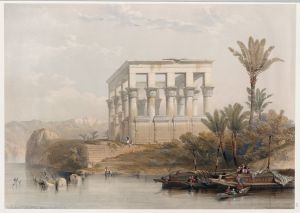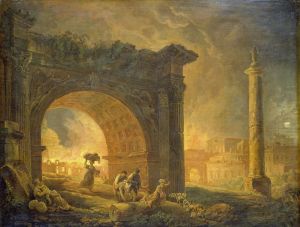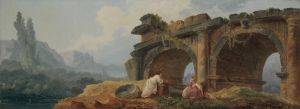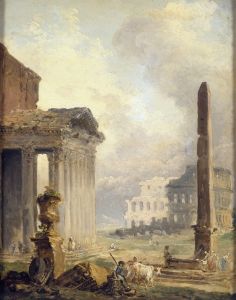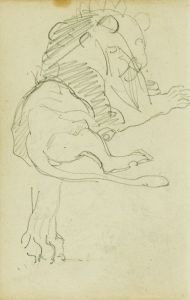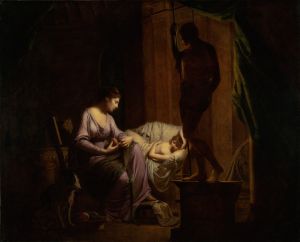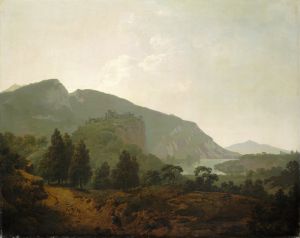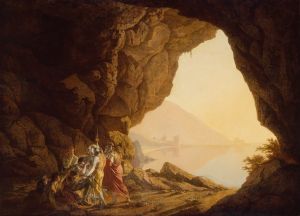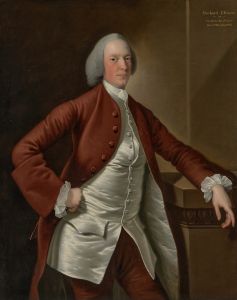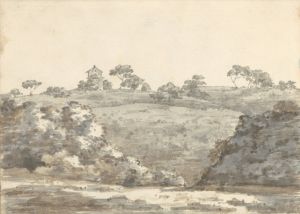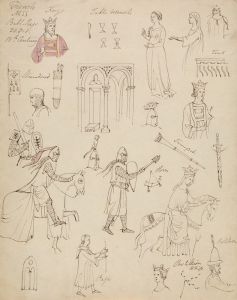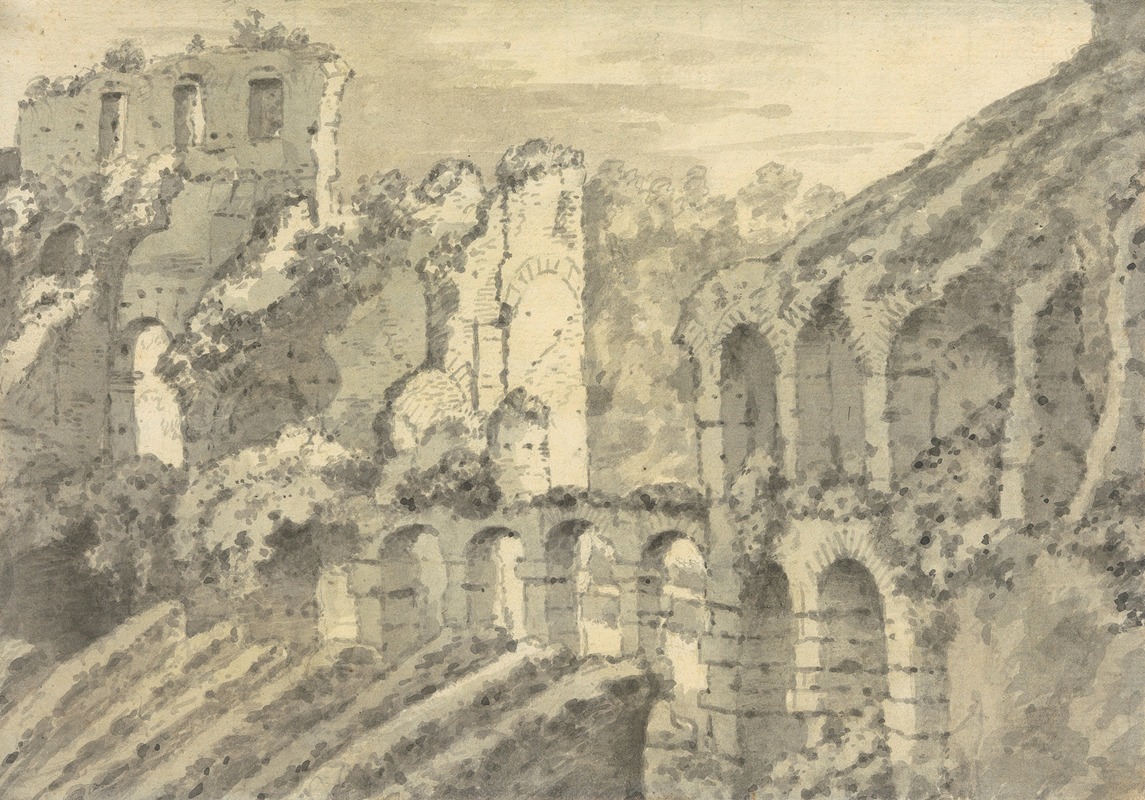
Roman Ruins
A hand-painted replica of Joseph Wright of Derby’s masterpiece Roman Ruins, meticulously crafted by professional artists to capture the true essence of the original. Each piece is created with museum-quality canvas and rare mineral pigments, carefully painted by experienced artists with delicate brushstrokes and rich, layered colors to perfectly recreate the texture of the original artwork. Unlike machine-printed reproductions, this hand-painted version brings the painting to life, infused with the artist’s emotions and skill in every stroke. Whether for personal collection or home decoration, it instantly elevates the artistic atmosphere of any space.
Joseph Wright of Derby, an English painter renowned for his dramatic use of light and shadow, created the painting Roman Ruins in the late 18th century. Wright is often associated with the Enlightenment and is celebrated for his ability to blend scientific themes, historical subjects, and evocative landscapes in his works. While his most famous paintings often depict scenes of industrial innovation or scientific discovery, Roman Ruins reflects his interest in classical antiquity and the sublime.
The painting portrays the remnants of ancient Roman architecture, capturing the grandeur and decay of a bygone civilization. Wright's fascination with ruins was influenced by the 18th-century European trend of romanticizing the past, particularly the classical world. This interest was fueled by the popularity of the Grand Tour, a cultural journey through Europe undertaken by wealthy individuals, which often included visits to Italy's ancient Roman sites. Although it is unclear whether Wright personally visited Rome, his work demonstrates a keen understanding of the aesthetic and symbolic power of ruins.
In Roman Ruins, Wright employs his signature chiaroscuro technique, using stark contrasts between light and shadow to create a dramatic atmosphere. The interplay of light highlights the textures and details of the crumbling architecture, emphasizing both its monumental scale and its fragility. The painting evokes a sense of awe and melancholy, inviting viewers to reflect on the passage of time and the impermanence of human achievements.
The exact date of the painting's creation is not definitively recorded, but it is consistent with Wright's broader body of work from the 1770s and 1780s, a period when he explored themes of history, nature, and human ingenuity. The painting may have been inspired by engravings or descriptions of Roman ruins, which were widely circulated among artists and intellectuals of the time.
Roman Ruins is part of Wright's broader exploration of themes that resonate with the Enlightenment's intellectual currents, including the tension between progress and decay, as well as the enduring influence of classical antiquity on Western art and culture. The painting is considered an example of Wright's ability to merge technical skill with profound emotional and philosophical depth.
Today, Roman Ruins is recognized as a testament to Joseph Wright of Derby's versatility as an artist and his engagement with the cultural and intellectual movements of his era. The painting is held in a private collection or museum, though its specific location is not widely documented.





